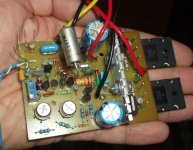Building Elvee's Circlophone: Documentation, Parts, Accessories, & beginner friendly
Intro
Circlophone is a new topology (a more efficient Class A, dynamic class AA), with a live sound character and an easy build. These are fun!
♦ The Original, optimized Circlophone
♦ The Germanium Circlophone
♦ Inverted Jfet Circlophone
Sample schematic:
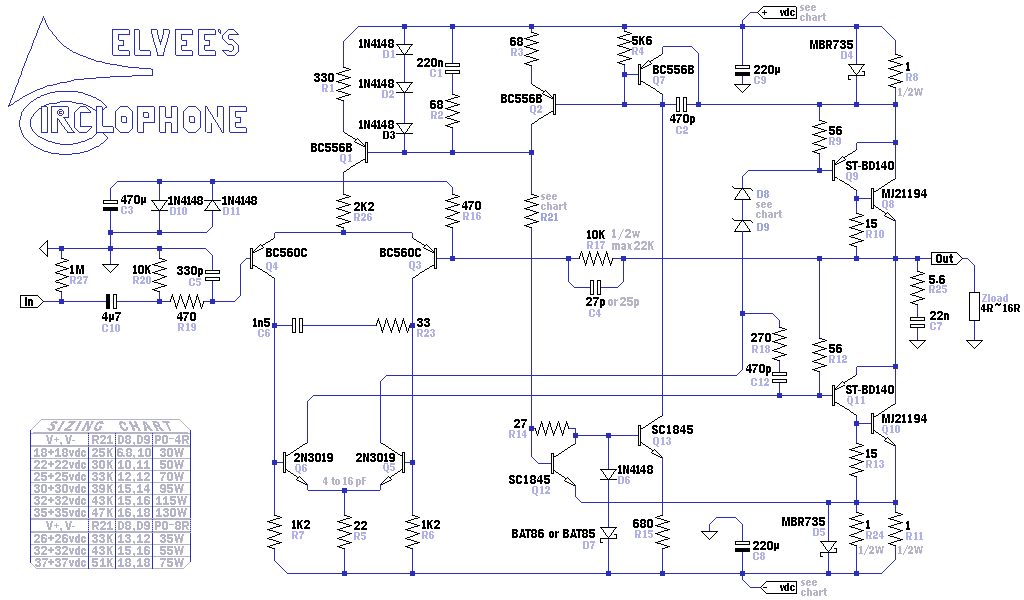
Parts options
♦ Q9, Q11 Driver: KSA1220, 2SA1930, 2SA1837, 2SA968, 2SB649, Philips/Harris BD140, and ST's BD140.
♦ Q5, Q6 VAS (cob 4pF~16pF): 2SC5171, 2N3019, 2SC3421, 2N1893, MosFet; Or if < 5pf like 2SC2911, BF819, add this cap.
♦ Q12, Q13 Sensor: BC546B on 25+25vdc rails, With higher voltage use KSC1845, 2SC1845, 2SC2240, 2SC2705 or 2N5551.
With higher voltage use KSC1845, 2SC1845, 2SC2240, 2SC2705 or 2N5551.
♦ Q4, Q3 Input: A Philips/NXP BC556B (post 7) is on the original, or nicely HFE matched BC556C or BC560C with a multimeter.
♦ Q8, Q10 Output: MJE3055, BD249C, MJ802, MJL21194, MJW21196, MJ21194, MJ15022, MJ15024, MJ15003 or the classics.
♦ D4, D5: Low voltage drop and high current handling is important, like 5a, 7a (MBR735), 10a (MBR1035) Shottky diodes.
♦ D8, D9: see convenient sizing chart.
♦ D7: BAT type "Signal Schottky" like a BAT86, BAS86, BAT85 or BAT54, available at Mouser & RS. Or there is an alternative.
♦ R21: "The value in KΩ ~ = 0.9 times the total AC supply" Or review Elvee's selection guide. Or, see convenient sizing chart.
Build specific:
♦ VAS on Piersma's Circlophone CFP build can be Sanyo 2SC2911 or 2SC3955, or similar specs.
♦ Terrangima's Darlington & MOSFET Circlophone has its own devices listed on the schematic--See post#226.
Notes
♦ Discussion of topology and modifications: Circlophone discussion thread
♦ Various brands of 2N5551, 2N5401: Quality Control--check the HFE
♦ Various brands of 2SB649, Quality Control: Click Here
♦ If using faster output devices, click here and install C11.
♦ Other parts selection questions? Here is a link to Elvee's build notes.
♦ Checking R21, Elvee said: "Measure the voltage, divide by the resistor value, if it's 1.5mA +/-50%, it's OK"
♦ While you're measuring, it is also easy to check the idle current.
♦ Elvee's LTSpice Circlophone simulation file for the original Circophone.
♦ For an example parts list, aka BOM (Bill of Materials): Click here.
Accessories
♦ A Jfet buffer isn't mandatory but if you want one for constant input impedance, click here.
♦ To solve offset bounce versus power issues, Elvee has published an optional offset trimmer circuit.
♦ Circlophone has Class A sound but if your sound is too mellow there's compensation in the LTP soft clipper.
♦ If you have efficient speakers in combination with big gain for big dynamics, you might want a limiter to stop x-max.
♦ Circlophone has very simple power supply requirements so regulated is unnecessary, but if you wanted regulated click here.
♦ To block thumps from single rail sources (computer) power up, and block some RF too since it is slightly capacitive, look at this.
♦ Circlophones go in the house, at work AND: Boostor, a companion for a Circlophone on the move, rock the the car, RV and boat too!
Intro
Circlophone is a new topology (a more efficient Class A, dynamic class AA), with a live sound character and an easy build. These are fun!
♦ The Original, optimized Circlophone
♦ The Germanium Circlophone
♦ Inverted Jfet Circlophone
Sample schematic:
Parts options
♦ Q9, Q11 Driver: KSA1220, 2SA1930, 2SA1837, 2SA968, 2SB649, Philips/Harris BD140, and ST's BD140.
♦ Q5, Q6 VAS (cob 4pF~16pF): 2SC5171, 2N3019, 2SC3421, 2N1893, MosFet; Or if < 5pf like 2SC2911, BF819, add this cap.
♦ Q12, Q13 Sensor: BC546B on 25+25vdc rails,
 With higher voltage use KSC1845, 2SC1845, 2SC2240, 2SC2705 or 2N5551.
With higher voltage use KSC1845, 2SC1845, 2SC2240, 2SC2705 or 2N5551.♦ Q4, Q3 Input: A Philips/NXP BC556B (post 7) is on the original, or nicely HFE matched BC556C or BC560C with a multimeter.
♦ Q8, Q10 Output: MJE3055, BD249C, MJ802, MJL21194, MJW21196, MJ21194, MJ15022, MJ15024, MJ15003 or the classics.
♦ D4, D5: Low voltage drop and high current handling is important, like 5a, 7a (MBR735), 10a (MBR1035) Shottky diodes.
♦ D8, D9: see convenient sizing chart.
♦ D7: BAT type "Signal Schottky" like a BAT86, BAS86, BAT85 or BAT54, available at Mouser & RS. Or there is an alternative.
♦ R21: "The value in KΩ ~ = 0.9 times the total AC supply" Or review Elvee's selection guide. Or, see convenient sizing chart.
Build specific:
♦ VAS on Piersma's Circlophone CFP build can be Sanyo 2SC2911 or 2SC3955, or similar specs.
♦ Terrangima's Darlington & MOSFET Circlophone has its own devices listed on the schematic--See post#226.
Notes
♦ Discussion of topology and modifications: Circlophone discussion thread
♦ Various brands of 2N5551, 2N5401: Quality Control--check the HFE
♦ Various brands of 2SB649, Quality Control: Click Here
♦ If using faster output devices, click here and install C11.
♦ Other parts selection questions? Here is a link to Elvee's build notes.
♦ Checking R21, Elvee said: "Measure the voltage, divide by the resistor value, if it's 1.5mA +/-50%, it's OK"
♦ While you're measuring, it is also easy to check the idle current.
♦ Elvee's LTSpice Circlophone simulation file for the original Circophone.
♦ For an example parts list, aka BOM (Bill of Materials): Click here.
Accessories
♦ A Jfet buffer isn't mandatory but if you want one for constant input impedance, click here.
♦ To solve offset bounce versus power issues, Elvee has published an optional offset trimmer circuit.
♦ Circlophone has Class A sound but if your sound is too mellow there's compensation in the LTP soft clipper.
♦ If you have efficient speakers in combination with big gain for big dynamics, you might want a limiter to stop x-max.
♦ Circlophone has very simple power supply requirements so regulated is unnecessary, but if you wanted regulated click here.
♦ To block thumps from single rail sources (computer) power up, and block some RF too since it is slightly capacitive, look at this.
♦ Circlophones go in the house, at work AND: Boostor, a companion for a Circlophone on the move, rock the the car, RV and boat too!
Last edited:
Art Gallery! (with links to each)
Elvee's Circlophone prototypes and measuring
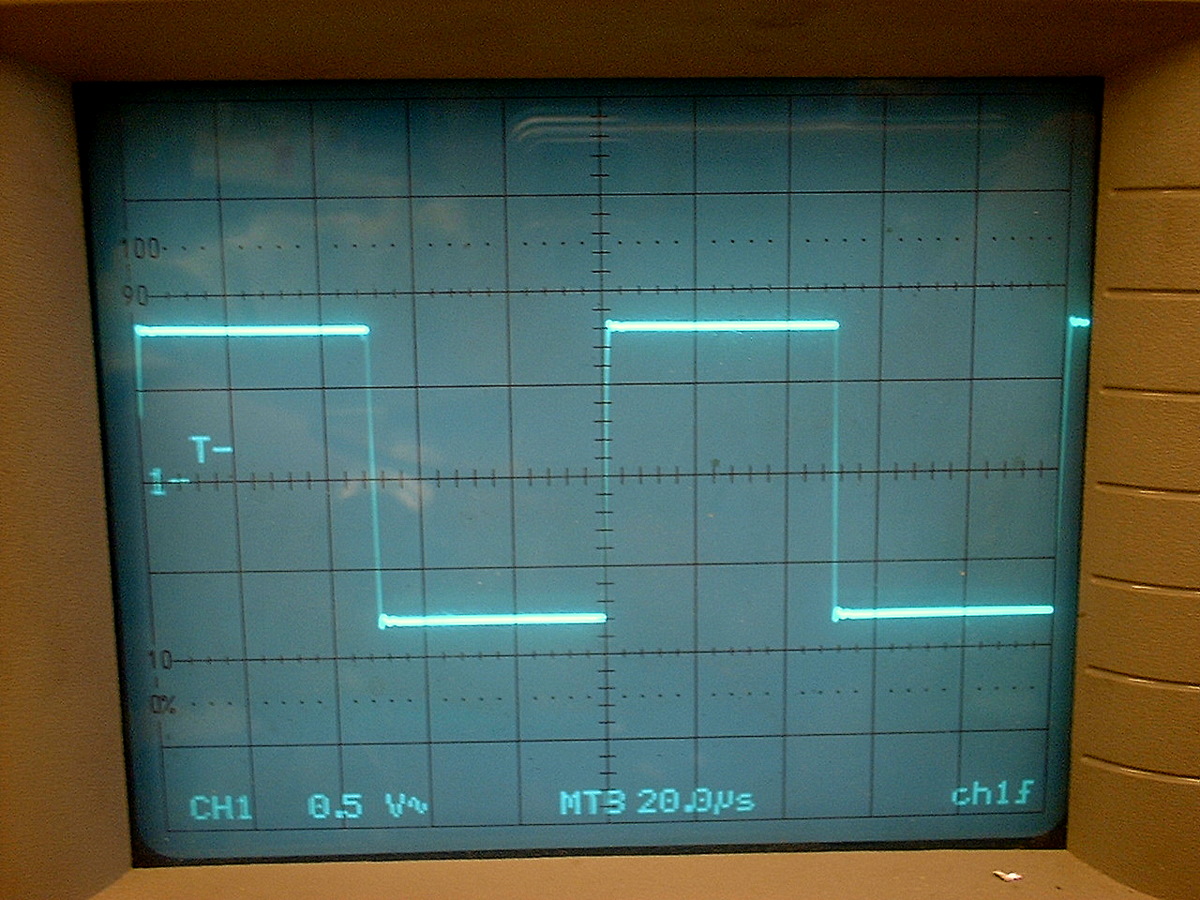
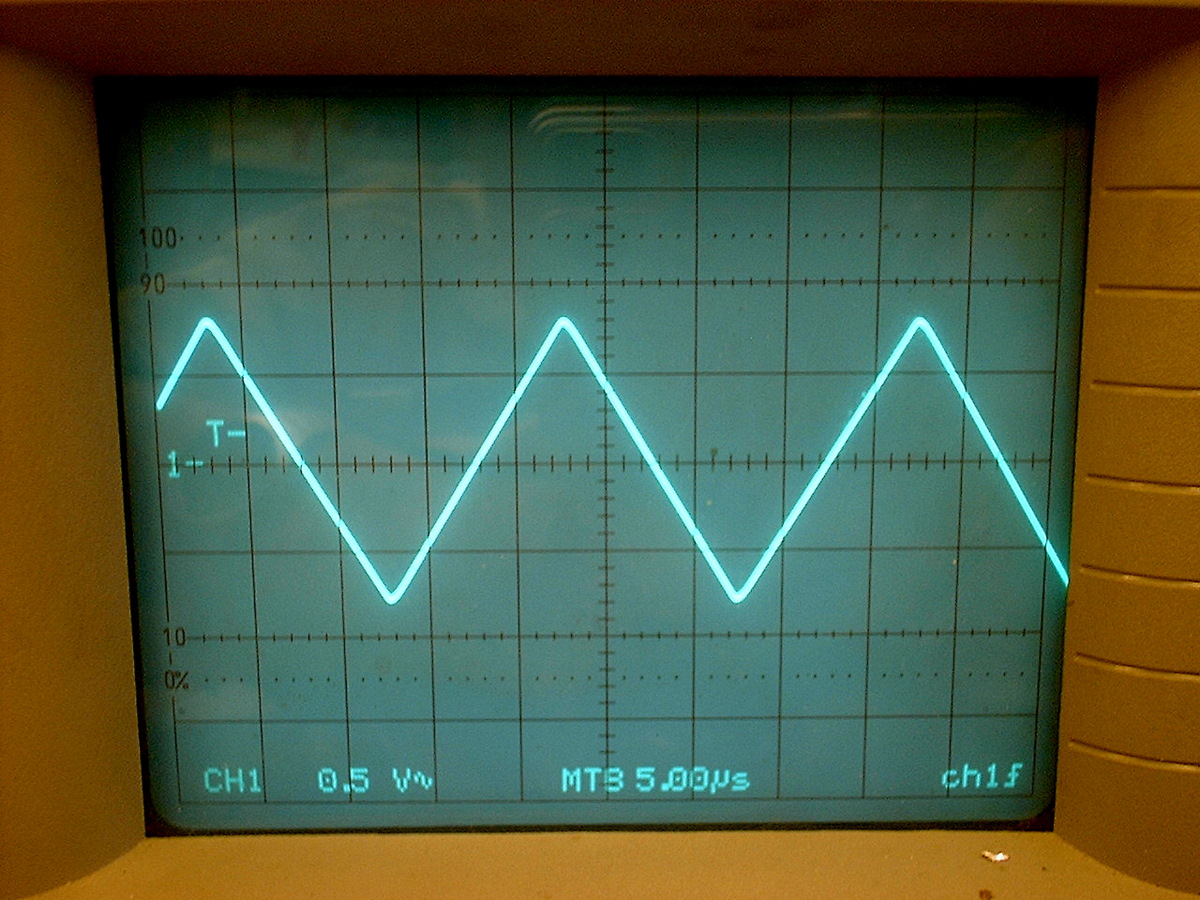
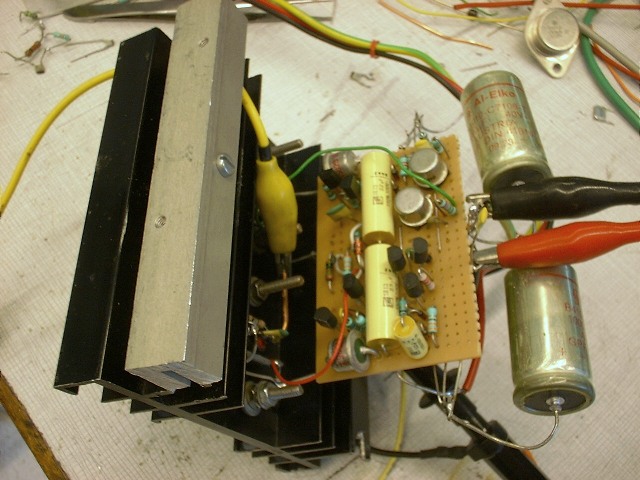
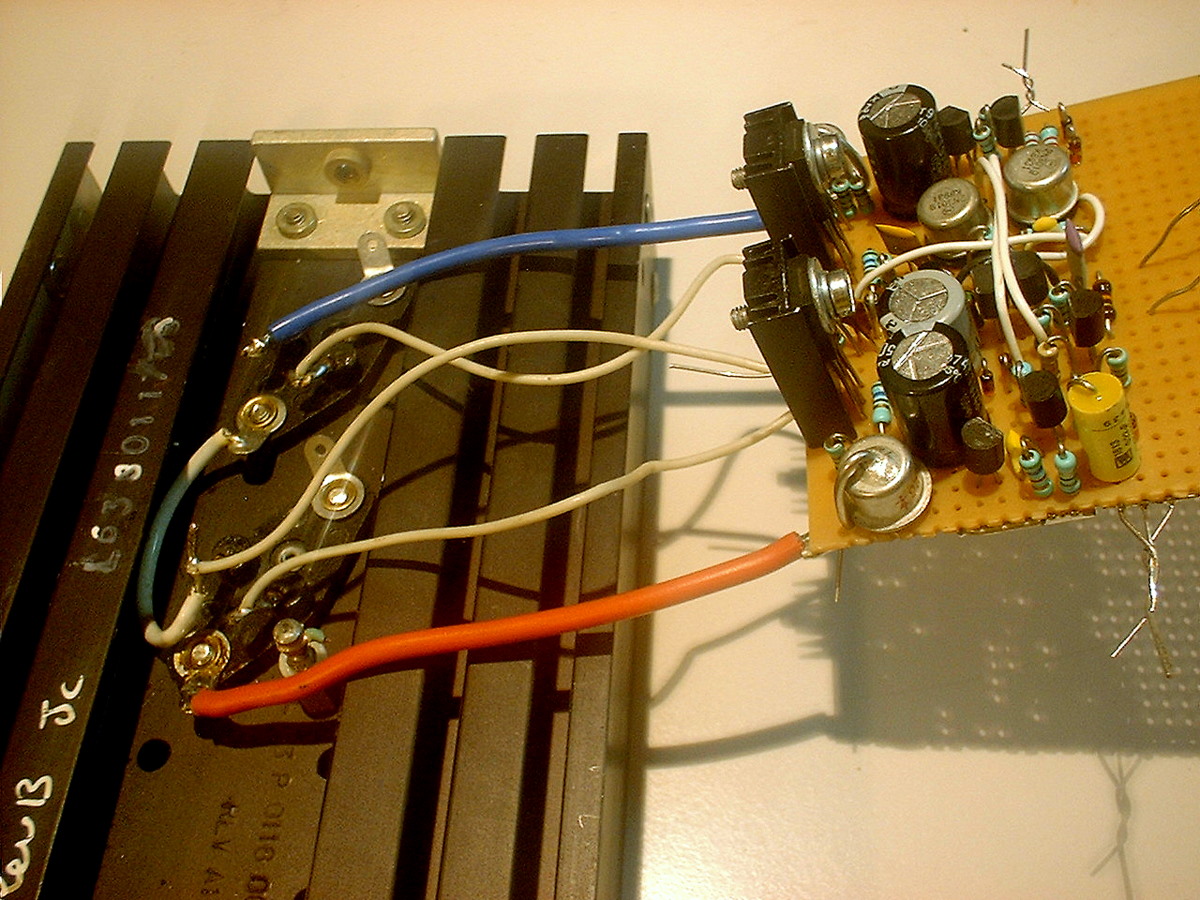
Odysseybmx414's high power Circlophone
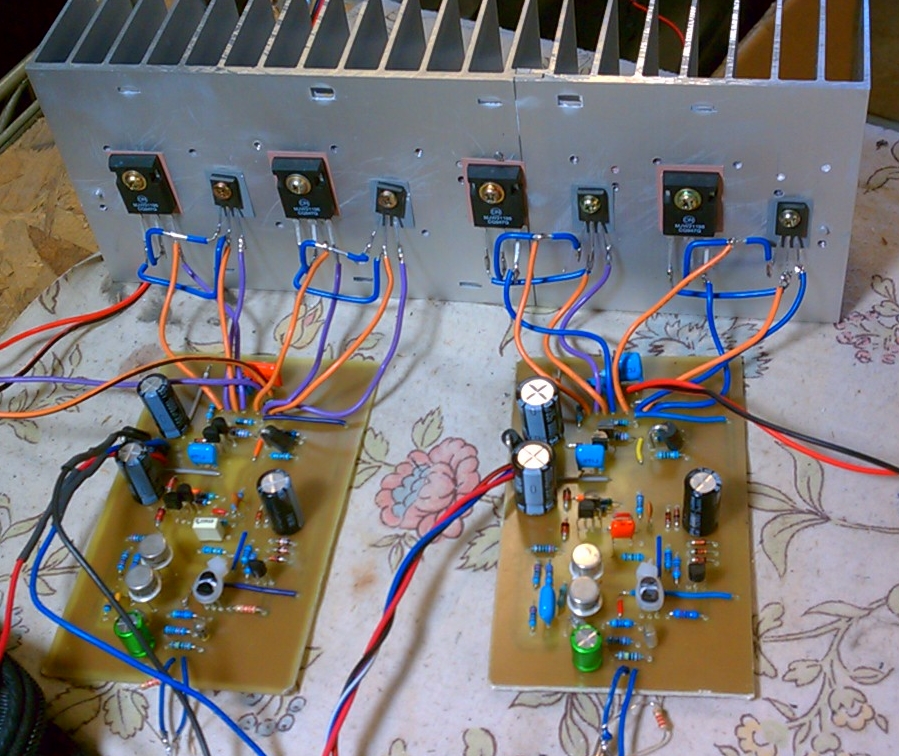
Terranigma's RF resistant Circlophone
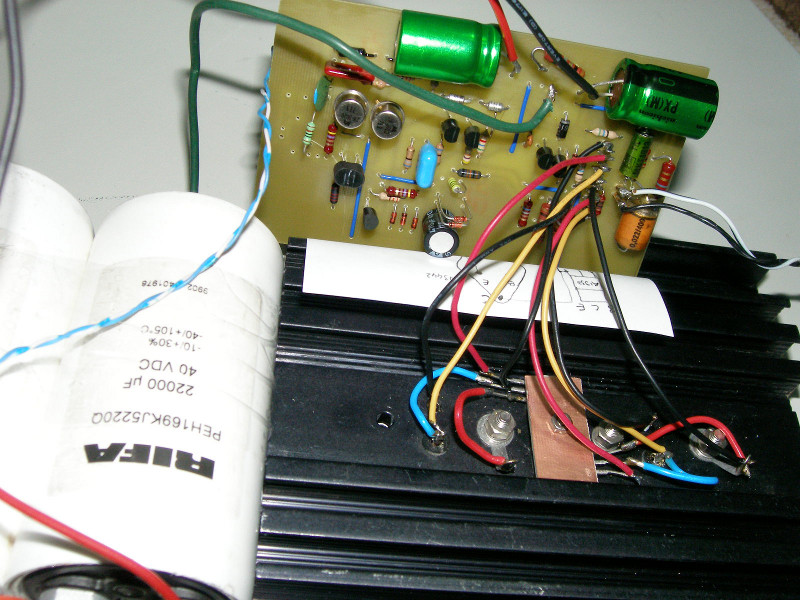
Mickymoose's Compact Circlophone
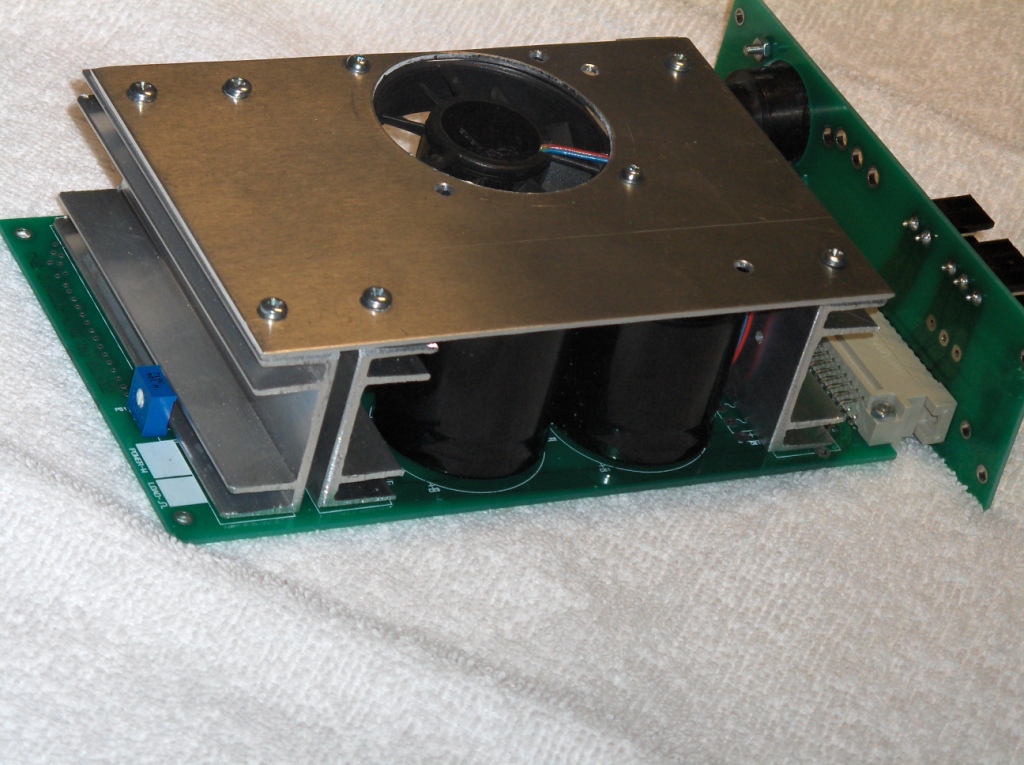
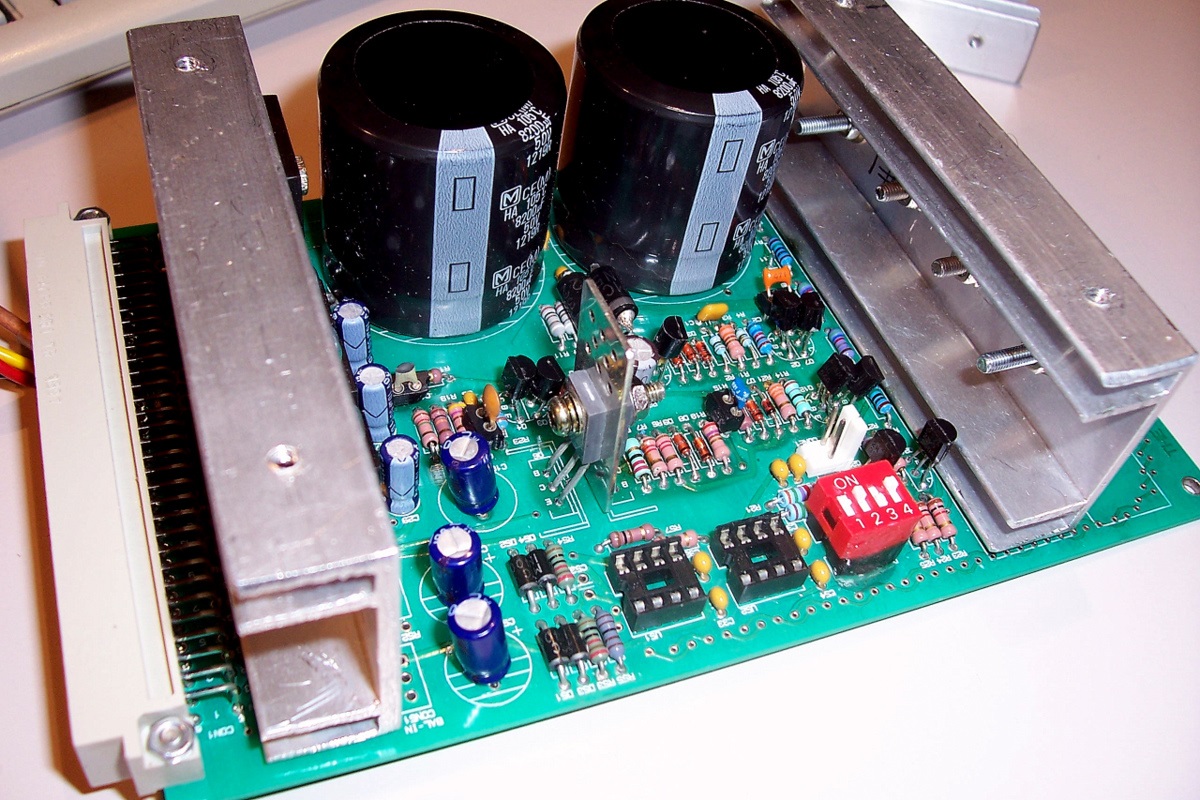
My [Daniel's] fanless miniature Circlophone
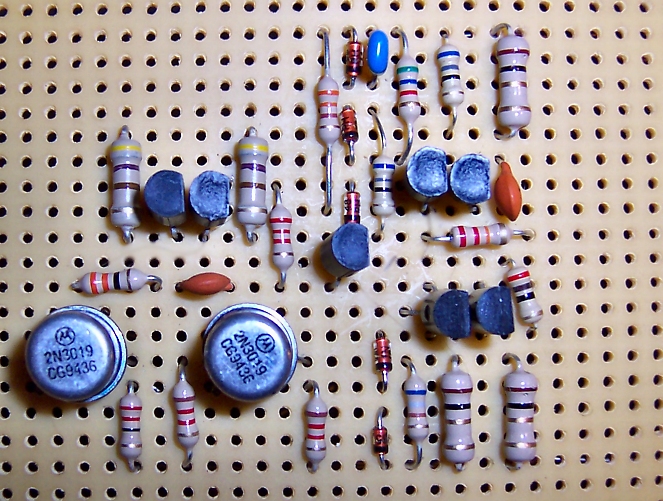
Terranigma's RF resistant Dutch Circlophone
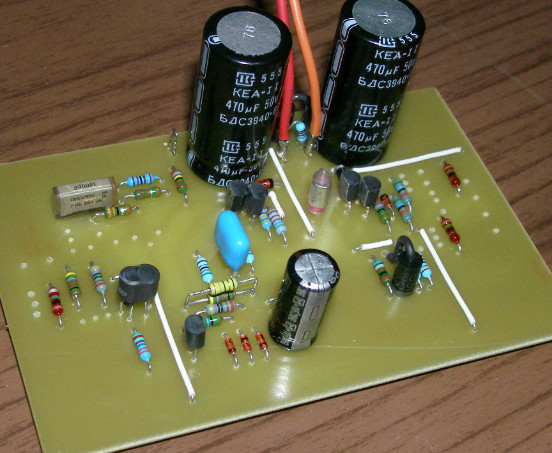
Piersma's CFP Circlophone
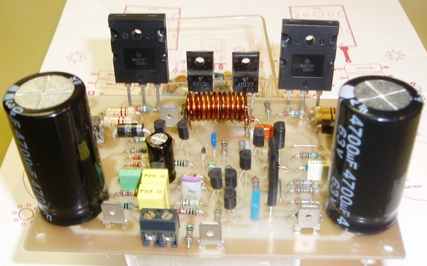
.
Feel free to post your Circlophone build pics here!
Elvee's Circlophone prototypes and measuring




Odysseybmx414's high power Circlophone

Terranigma's RF resistant Circlophone

Mickymoose's Compact Circlophone


My [Daniel's] fanless miniature Circlophone

Terranigma's RF resistant Dutch Circlophone

Piersma's CFP Circlophone

.
Feel free to post your Circlophone build pics here!
This is my latest prototype build prior finalizing CFP pcb layout. That axial metal case is a military spec tantalum capacitor used as feedback capacitor installed very casual way. You may see, TO220 schottkies have insulated with heat shrinkable tubing. This build carries BC556B/BC546B's and 2n5551's as small signal transistors, 2N5858 as bias servo, Philips BD140 as drivers, MJL21194 as power transistors.
I used a legendary Iskra 12K 1/2W resistor as feedback. Gain ratio kept as 12K/560R respecting original setting.
I used a legendary Iskra 12K 1/2W resistor as feedback. Gain ratio kept as 12K/560R respecting original setting.
Attachments
Last edited:
New Old Stock (NOS) Parts Resources versus NEW Parts resources
NOS PNP Driver (6 to 30pF)
Philips BD140 (markings "PHI BD140" gray case, circa 1988) generally unavailable
Telefunken BD140 (markings "TFK BD140") generally unavailable
2SB649 Matte finish, Curve edges, 8 sided collector plate, authentic
2SA1358 verified authentic
2SA1358
NEW PNP Driver (6 to 30pF)
KSA1220
2SA1930
2SA968
2SA1837
NOS High voltage (more than 40v rails) NPN VAS (4 to 16pF)
2SC3421 verified authentic
2SC3421
Motorola 2N3501 verified authentic
2N5858
BF819
NEW high voltage (more than 40v rails) NPN VAS (4 to 16pF)
Central Semiconductor 2N3501
Central Semiconductor 2N3500 and 2N3501
2SC5171 (probable but not yet tested)
MosFet
NEW medium voltage (for up to about 36+36vdc rails) NPN VAS (4 to 16pF)
ST 2N3019
NXP BCP56
MosFet
NOS Input
High HFE PNP Fairchild BC556C
High HFE NPN (for CFP version) Fairchild BC546C
Philips BC556B, Philips BC546B
Philips BC556B, Philips BC546B
Philips BC556B, Philips BC546B
Philips BC556B, Philips BC546B
Philips NXP BC560C, BC550C, generally unavailable
NEW Input
Fairchild BC556B, BC546B, BC560C, BC550C, KSC1845, KSA992
Toshiba, 2SA970-BL, 2SC2240-BL, 2SC2713, 2SA1163, 2SC4117, 2SA1587
NXP (Philips) BC856, BC846, BC860, BC850, (SMD versions of BC556B, BC546B etc. . .)
It may be interesting to compare specs of selections to see what they have in common, and that way you can find many more options than these. Stock of NOS parts is not guaranteed to last and likewise stock of New parts is not guaranteed to stay current. See also post 1 here. See also the main Circlophone thread where parts have been discussed and tested.
If you have selected less than 40+40VDC rails, you can fill your shopping list with authentic parts from Mouser and "just one box" may cost less.
So, if you were having shopping difficulty, or if you wanted to explore different devices, I hope this resource post helps.
NOS PNP Driver (6 to 30pF)
Philips BD140 (markings "PHI BD140" gray case, circa 1988) generally unavailable
Telefunken BD140 (markings "TFK BD140") generally unavailable
2SB649 Matte finish, Curve edges, 8 sided collector plate, authentic
2SA1358 verified authentic
2SA1358
NEW PNP Driver (6 to 30pF)
KSA1220
2SA1930
2SA968
2SA1837
NOS High voltage (more than 40v rails) NPN VAS (4 to 16pF)
2SC3421 verified authentic
2SC3421
Motorola 2N3501 verified authentic
2N5858
BF819
NEW high voltage (more than 40v rails) NPN VAS (4 to 16pF)
Central Semiconductor 2N3501
Central Semiconductor 2N3500 and 2N3501
2SC5171 (probable but not yet tested)
MosFet
NEW medium voltage (for up to about 36+36vdc rails) NPN VAS (4 to 16pF)
ST 2N3019
NXP BCP56
MosFet
NOS Input
High HFE PNP Fairchild BC556C
High HFE NPN (for CFP version) Fairchild BC546C
Philips BC556B, Philips BC546B
Philips BC556B, Philips BC546B
Philips BC556B, Philips BC546B
Philips BC556B, Philips BC546B
Philips NXP BC560C, BC550C, generally unavailable
NEW Input
Fairchild BC556B, BC546B, BC560C, BC550C, KSC1845, KSA992
Toshiba, 2SA970-BL, 2SC2240-BL, 2SC2713, 2SA1163, 2SC4117, 2SA1587
NXP (Philips) BC856, BC846, BC860, BC850, (SMD versions of BC556B, BC546B etc. . .)
It may be interesting to compare specs of selections to see what they have in common, and that way you can find many more options than these. Stock of NOS parts is not guaranteed to last and likewise stock of New parts is not guaranteed to stay current. See also post 1 here. See also the main Circlophone thread where parts have been discussed and tested.
If you have selected less than 40+40VDC rails, you can fill your shopping list with authentic parts from Mouser and "just one box" may cost less.
So, if you were having shopping difficulty, or if you wanted to explore different devices, I hope this resource post helps.
Last edited:
Wow, that's compact! It looks great. Have you heard it play yet? I was wondering if it is RF resistant like your other boards?This is my latest prototype build prior finalizing CFP pcb layout. That axial metal case is a military spec tantalum capacitor used as feedback capacitor installed very casual way. You may see, TO220 schottkies have insulated with heat shrinkable tubing. This build carries BC556B/BC546B's and 2n5551's as small signal transistors, 2N5858 as bias servo, Philips BD140 as drivers, MJL21194 as power transistors. I used a legendary Iskra 12K 1/2W resistor as feedback. Gain ratio kept as 12K/560R respecting original setting.
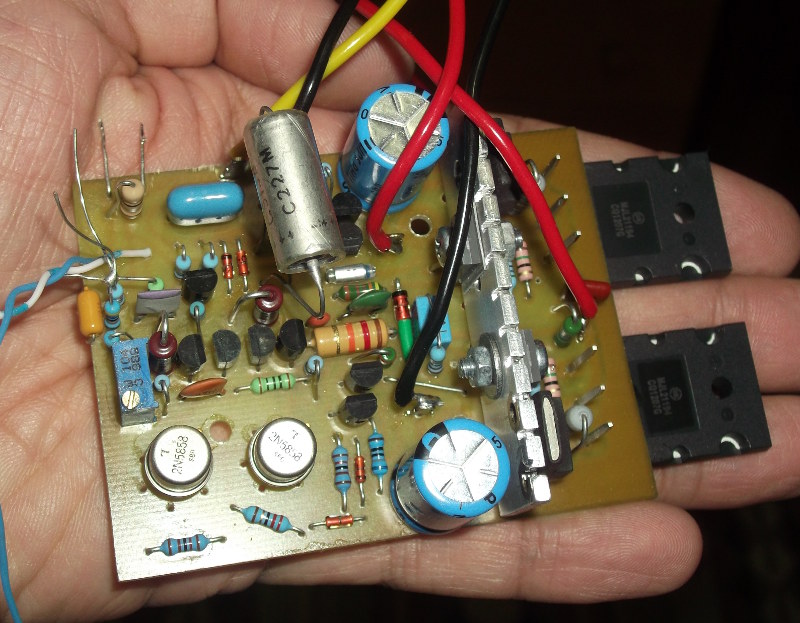
Hi,
I am very interested by the Circlophone because having nothing to preset, just like the Quad 405, and because it is a very good way to recycle old devices. It also had good specs and nice reviews.
I started to extract the necessary components for my many junk-boxes. However, I did not find any 2N3019 for the Q5-Q6 pair. Being in Tours (France) yesterday, I went to this shop
Accueil - radioson, boutique en ligne de composants electroniques pour professionnels et particuliers, installe a blere (37)
where I have been proposed BSW68A (originated form Philips, I think). Looking at the datasheets, they seem adequate for the circuit. What do you think ?
Regards.
I am very interested by the Circlophone because having nothing to preset, just like the Quad 405, and because it is a very good way to recycle old devices. It also had good specs and nice reviews.
I started to extract the necessary components for my many junk-boxes. However, I did not find any 2N3019 for the Q5-Q6 pair. Being in Tours (France) yesterday, I went to this shop
Accueil - radioson, boutique en ligne de composants electroniques pour professionnels et particuliers, installe a blere (37)
where I have been proposed BSW68A (originated form Philips, I think). Looking at the datasheets, they seem adequate for the circuit. What do you think ?
Regards.
where I have been proposed BSW68A (originated form Philips, I think). Looking at the datasheets, they seem adequate for the circuit. What do you think ?
The problem is the collector capacitance: 35pF is too much for the VAS.
Note that it would probably work, but there are many suitable alternatives more common than this one, like the 2N1893 for example.
Last edited:
Wow, that's compact! It looks great. Have you heard it play yet? I was wondering if it is RF resistant like your other boards?
Yes, If your source doesn't introduce RF strictly, there isn't any issue with RF blocking if we regarding bare amplifier itself. It is dead silent. My conclusion about RF issue that depending my experience is, it is not related with layout that much. It is exclusively related with topology.
NOS High voltage (more than 40v rails) NPN VAS (4 to 16pF)
2N5858
2N5858 is more likely 2N3019 (80V) but higher fT. Then we may categorize it as "NOS medium voltage"
Vas, Q5, Q6. . . 4pF to 16pF range
On the datasheet, you need to see COB in the range of 4 to 16 pF, like these: 2n3498, 2n3499, 2n3500, 2n3501, 2n3019, 2N3020, 2N1893, 2SC3421, 2SC5171, 2SD667A, a real Hitachi 2SD669, NXP BCP56, a real Philips BC639, a real Philips BD139 (gray case, markings "PHI"), or a BF819 or some low capacitance MosFets.
The 6pF to 12pF selections are near the middle of the range (8pF centerpoint tolerance), for best performance.
Elvee recently mentioned a capacitor trick that I wish I'd known about earlier, since there are lot of medium current ("mini driver" aka "predriver") devices below 4pF COB that I shouldn't have disregarded during my parts search. Apparently, one can increase the device capacitance, for example BF819's 3.9pF to a practically perfect, centerpoint tolerance, 8.6pF, by simply adding a 4.7pF capacitor from collector to base.
Parts Examples. . .
Just for fun, let's look at an all 6pF example with Philips devices:
Philips BC560C (NXP BC860) Input -to- Philips BC639 (NXP BCP56, Philips BD139) VAS -to- Philips BD140 Driver
It is baby bear, mama bear, papa bear, family.
There is small, medium and large, all low capacitance 6pF devices.
Highly expensive, availability at LittleDiode (or ask your favorite hoarders).
How about an all NEC (sometimes Hitachi branded NEC) example:
2SA988 Input -to- 2SD667A (2SD669 is cooler) VAS -to- 2SD647 (SA1220) Driver
That's 2pF small (may be twitchy for layout, extreme gain--must match), 12pF medium, and 26pF large.
Caution: most of today's market is fake and/or dysfunctional reproductions.
Availability: Zilch, except maybe they're in your junk box.
And now for Toshiba:
2SA970-BL Input -to- 2SC3421 VAS -to- 2SA1930 Driver
There's 4pF small, 15pF medium-large, and 26pF large.
This combination can sometimes be found at LittleDiode and Electronics Salon.
2SA1930 can be found many places, including Mouser.
Why not Fairchild (NEC and Philips second source) too?
KSA992, BC560C or BC556C input -to- (KSC1009, TN3019 too hot) ST's 2N3019 VAS -to- KSA1220 Driver
There's 2pF or 6pF small, 12pF medium, and 26pF large.
This combination can be found at Mouser.
For VAS (Q5, Q6) a 2N3019 can be found almost anywhere as there are many makes of this still popular 1 watt NPN transistor. ST brand has close matching (but you might want to HFE match Motorola for QC). The large metal transistor is easier to cool than plastic alternatives.
You can mix and match the above examples, which will make slight differences in sonic signature.
Exceptions (more like "trades"):
Given a really good quality part for VAS and given good layout too (trace length?), then it is possible to use an ordinary ST BD140 or a popular big OnSemi TO220 for driver.
The reverse is also true, since a really good quality low capacitance driver (like authentic gray case Philips BD140 at 6pF) could let you use a slightly higher capacitance VAS.
Reasonable at both locations also works--we've seen this work well with the Toshiba 2SA1358-Y 2SC3421-Y pairs (that Elvee tested for us) when the NPN is 15pF to 16pF and the driver is 26pF to 30pF.
Hi,
I am very interested by the Circlophone because having nothing to preset, just like the Quad 405, and because it is a very good way to recycle old devices. It also had good specs and nice reviews. I started to extract the necessary components for my many junk-boxes. However, I did not find any 2N3019 for the Q5-Q6 pair. Being in Tours (France) yesterday, I went to this shop
Radioson where I have been proposed BSW68A (originated form Philips, I think). Looking at the datasheets, they seem adequate for the circuit. What do you think ?
Regards.
On the datasheet, you need to see COB in the range of 4 to 16 pF, like these: 2n3498, 2n3499, 2n3500, 2n3501, 2n3019, 2N3020, 2N1893, 2SC3421, 2SC5171, 2SD667A, a real Hitachi 2SD669, NXP BCP56, a real Philips BC639, a real Philips BD139 (gray case, markings "PHI"), or a BF819 or some low capacitance MosFets.
The 6pF to 12pF selections are near the middle of the range (8pF centerpoint tolerance), for best performance.
Elvee recently mentioned a capacitor trick that I wish I'd known about earlier, since there are lot of medium current ("mini driver" aka "predriver") devices below 4pF COB that I shouldn't have disregarded during my parts search. Apparently, one can increase the device capacitance, for example BF819's 3.9pF to a practically perfect, centerpoint tolerance, 8.6pF, by simply adding a 4.7pF capacitor from collector to base.
Parts Examples. . .
Just for fun, let's look at an all 6pF example with Philips devices:
Philips BC560C (NXP BC860) Input -to- Philips BC639 (NXP BCP56, Philips BD139) VAS -to- Philips BD140 Driver
It is baby bear, mama bear, papa bear, family.
There is small, medium and large, all low capacitance 6pF devices.
Highly expensive, availability at LittleDiode (or ask your favorite hoarders).
How about an all NEC (sometimes Hitachi branded NEC) example:
2SA988 Input -to- 2SD667A (2SD669 is cooler) VAS -to- 2SD647 (SA1220) Driver
That's 2pF small (may be twitchy for layout, extreme gain--must match), 12pF medium, and 26pF large.
Caution: most of today's market is fake and/or dysfunctional reproductions.
Availability: Zilch, except maybe they're in your junk box.
And now for Toshiba:
2SA970-BL Input -to- 2SC3421 VAS -to- 2SA1930 Driver
There's 4pF small, 15pF medium-large, and 26pF large.
This combination can sometimes be found at LittleDiode and Electronics Salon.
2SA1930 can be found many places, including Mouser.
Why not Fairchild (NEC and Philips second source) too?
KSA992, BC560C or BC556C input -to- (KSC1009, TN3019 too hot) ST's 2N3019 VAS -to- KSA1220 Driver
There's 2pF or 6pF small, 12pF medium, and 26pF large.
This combination can be found at Mouser.
For VAS (Q5, Q6) a 2N3019 can be found almost anywhere as there are many makes of this still popular 1 watt NPN transistor. ST brand has close matching (but you might want to HFE match Motorola for QC). The large metal transistor is easier to cool than plastic alternatives.
You can mix and match the above examples, which will make slight differences in sonic signature.
Exceptions (more like "trades"):
Given a really good quality part for VAS and given good layout too (trace length?), then it is possible to use an ordinary ST BD140 or a popular big OnSemi TO220 for driver.
The reverse is also true, since a really good quality low capacitance driver (like authentic gray case Philips BD140 at 6pF) could let you use a slightly higher capacitance VAS.
Reasonable at both locations also works--we've seen this work well with the Toshiba 2SA1358-Y 2SC3421-Y pairs (that Elvee tested for us) when the NPN is 15pF to 16pF and the driver is 26pF to 30pF.
Last edited:
Easter egg!
In honor of the Easter holiday, I have hyperlinked a heck of a lot and included a link to an authentic stock of gray case Philips BD140 PNP drivers. . . somewhere on this thread. . . And, there's a lot of other classic and recent devices to find. As always, high performance classics are in short supply, so if you miss them, just ask your friends here on diyaudio.com, since trading devices and supplies is fairly commonplace. This forum also has a commercial sector that is worth mentioning. NOS (discontinued) devices aren't vital to Circlophone at all; however, some people do like to use the classic devices for fun.
In honor of the Easter holiday, I have hyperlinked a heck of a lot and included a link to an authentic stock of gray case Philips BD140 PNP drivers. . . somewhere on this thread. . . And, there's a lot of other classic and recent devices to find. As always, high performance classics are in short supply, so if you miss them, just ask your friends here on diyaudio.com, since trading devices and supplies is fairly commonplace. This forum also has a commercial sector that is worth mentioning. NOS (discontinued) devices aren't vital to Circlophone at all; however, some people do like to use the classic devices for fun.
The dissipation is mostly comparable to that of more conventional class AB amplifiers.What size heatsinks are people using?
There are one or two minor differences: the quiescent power is typically 2 to 3 times larger than a normal AB amp, , but that is partly compensated by a better efficiency at high power.
For a 60W/ch amplifier used domestically, one is enough.I have a couple 260 x 100 x 40 high fins, use one or both?
If you build a higher power version, and you listen to heavily compressed music at high volume, you should use one per channel
With the sole clue being the voltage range of BD140. . .What size heatsinks are people using?
I have a couple 260 x 100 x 40 high fins, use one or both?
Getting nearer, boards populated apart from BD140's + heatsinks.
I guess 120w to 140w worth of class AB amplifier per each heatsink (much depending on other factors like thermal interface speed, quality of thermal materials, significant amplifier enclosure ventilation, added mounting brackets, etc. . .).
So, 1 heatsink for stereo amp with 8 ohm speakers or 2 heatsinks if 4 ohm speakers.
Did you, subjectively, like the little toshiba pair better or the big toshiba pair? Oh, I meant the audio quality?I have just tested the 2SA1930/2SC5171 pair as drivers and VAS.
The samples kindly provided by Daniel are authentic, and they perform remarkably well in the Circlophone.
The all-plastic construction makes mounting on a heatsink very easy, and the case has a low enough thermal resistance of its own for the VAS to be left without heatsink.
In summary, an excellent choice: high availability, good performances and ease of use: a dream.
I wish I could have been there to see the look on your face while you were pin bending and soldering great big TO220NIS sized parts into the VAS.
I guess that the 2SA1930/2SC5171 have one oddity in that they work better after warming up, but that is not a problem here.
Toshiba is also carried inexpensively by Mouser so this is very convenient. I would also like to thank Electronics Salon and Zoe_Tsang for commitment to authentic parts.
Last edited:
Did you, subjectively, like the little toshiba pair better or the big toshiba pair? Oh, I meant the audio quality?
I think Elvee is preferring to leave listening impressions to the builders. And he already stated that he had tiny ears.
Since that I'm not such a skilled and equipped person for accurate measuring, capable builders (like Elvee) may help us to provide part combinations for oscillation free builds, especially without that 10nf. I know that if a Circlophone is healthy, it is already sounding very beautiful. Hope you get my idea.
Tin ears is a regional colloquialism, meaning that one does not have perfect pitch; however, when returned into the original context (containing polite satire) it may mean that ears do not substitute for measuring. It probably means that just one set of ears do not substitute for measuring. The preference of leaving the published listening impressions to others is because a larger sample makes better data.. . .tiny ears.. . .
Last edited:
- Home
- Amplifiers
- Solid State
- Building Elvee's Circlophone: Documentation, Parts, Accessories, & beginner friendly
